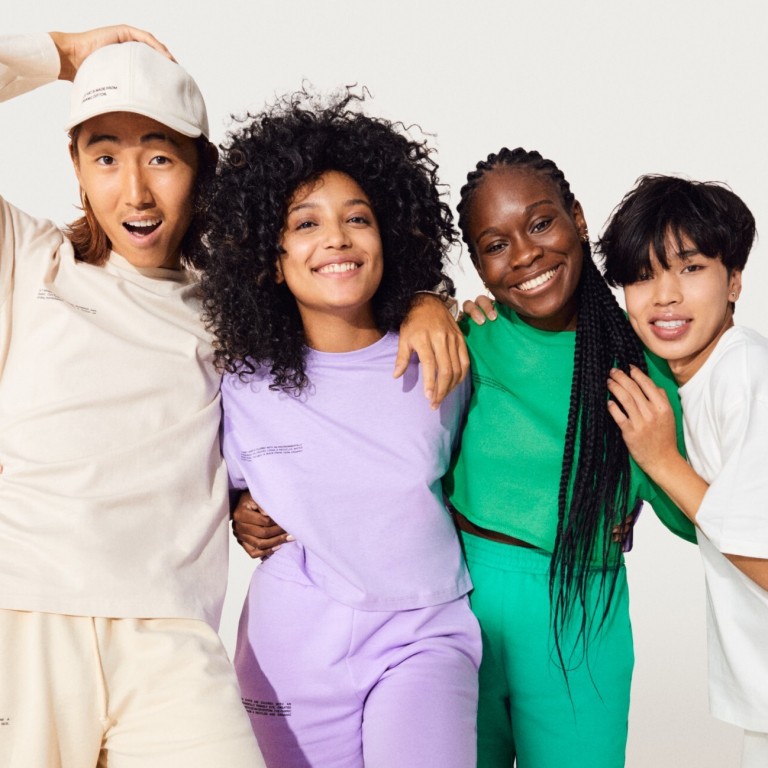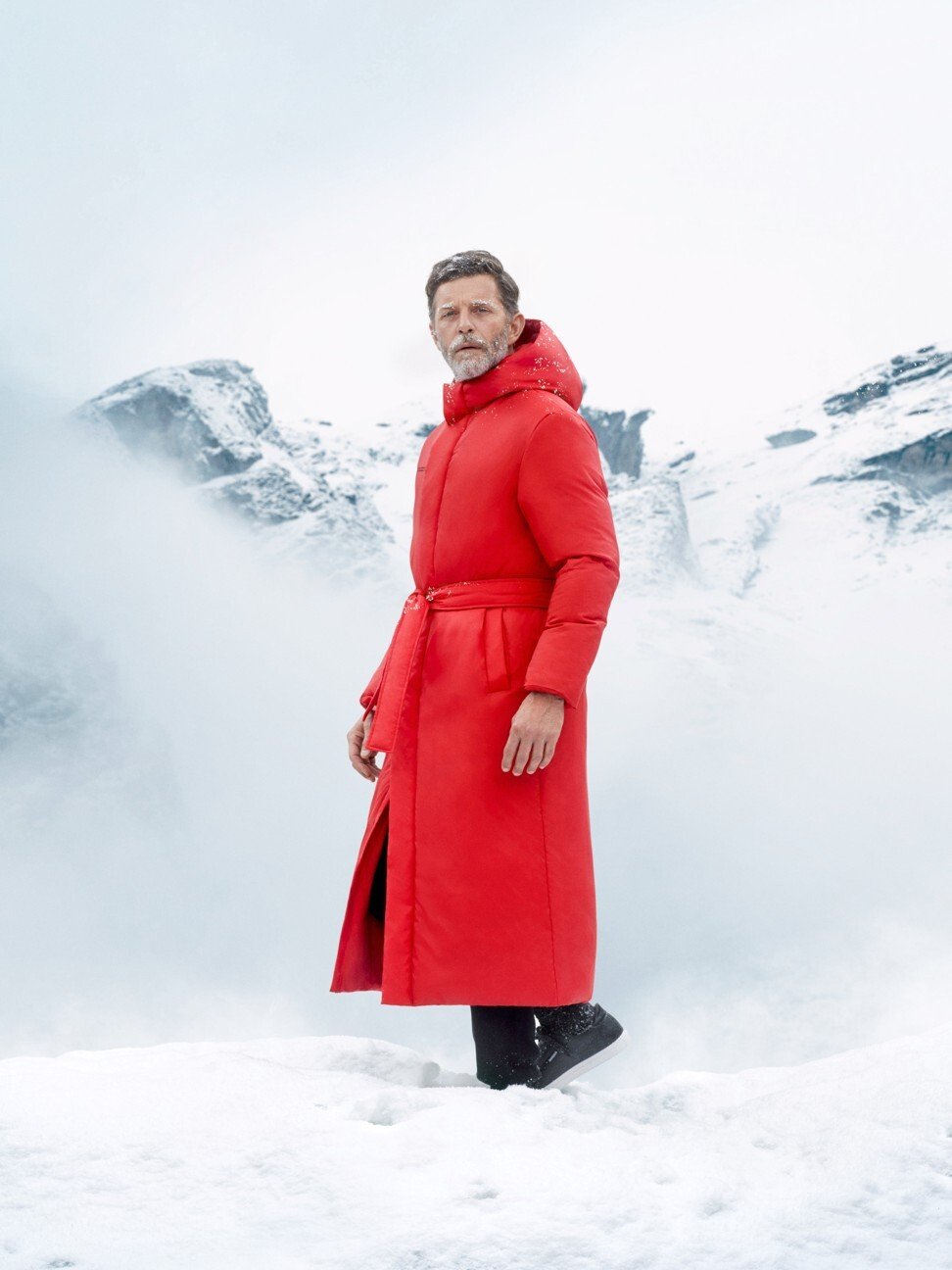
Science meets fashion in sustainable brand Pangaia, with star fans like Justin Bieber and the Kardashians in love with its at-home essentials
- Comfy sweatpants, T-shirts, sweatshirts – made from recycled or compostable materials using processes that reduce waste, pollution and reliance on fossil fuels
- Pangaia pieces come with their environment-friendly credentials literally printed on the garments, and the brand has gained cult status thanks to star fans
Perhaps you’ve already seen those pop-coloured comfy basics (sweatpants, T-shirts, sweatshirts, shorts and jackets) on the likes of Natalie Portman, Justin Bieber and Pharrell Williams. New releases sell out within hours after they drop online, fuelled by a young generation of fashion fans hooked on e-commerce.
Well-detailed, cleverly designed and right on the pulse with fashion’s shift towards sports and casual, Pangaia pieces come with their environment-friendly credentials – the materials used and how they were processed – literally printed on the garments.
With the Covid-19 pandemic and working from home turning us all into homebodies, the brand offers all the comfort essentials that are taking over our wardrobes.
“We went with the most digestible items that everyone can relate to,” says Maria Srivastava, the brand’s chief impact officer. “My mum wears the tracksuit, I wear it and so do my kids. It’s the idea that it transcends age, style, seasons.”
Winning over fans with this philosophy of radical transparency, and what chief innovation officer Amanda Parkes calls “hi-tech naturalism”, the science-led label uses recycled materials or ones that are compostable, and processes that reduce waste, pollution and reliance on fossil fuels.
Her family made billions from fashion, now she wants to clean it up
Supply-chain transparency is also important, with an emphasis on reinventing processes instead of just plugging environment-friendly elements into fashion’s existing, wasteful production chain.
“I think it’s much easier to start from scratch in doing this, instead of trying to redirect the Titanic so to speak,” explains Parkes, a graduate of MIT and Stanford University with more than 15 years of experience in fashion innovation, sustainability, wearable technologies and smart materials.

The brand’s latest launches are durable, super hi-tech FLWRDWN puffer jackets and coats for winter. Instead of animal down, they use a “specific part of a wild flower, mixed with a biopolymer [for structure] and aerogel [that works like a glue and protectant that retains heat]. That’s one of the most hi-tech materials in the world made in a cellular way and it’s still compostable,” Parkes explains.
That FLWRDWN material took 10 years of research to develop, just one indication of the brand’s commitment to serious science-based solutions. Another is its recent investment in bio-based materials science company Kintra that uses things like sugar cane, corn and algae to improve the functionality of fabrics and make them more compostable.
“I come from the tech, science side with Google and Intel and such, and was working more in fashion through the wearable tech side – and I really saw how fashion wasn’t really owning the means of its own production,” says Parkes.
At the core of the brand is constant improvement on supply chain transparency. A QR code for each Pangaia product will launch in the spring, linking to data on where and how something was made and an assessment of its components’ life cycles.
“It will enable circularity in a way that allows an industrial recycler to access all of that,” says Srivastava. “Some of our materials are new, so we are creating data that doesn’t exist yet.”
The company favours raw materials from places with an abundance of nature, “then we infuse and augment with hi-tech solutions to generate added functionality. With that come other principles like riding the supply chain of fossil fuels, so our priority has become getting rid of synthetics and promoting biodiversity. There’s not one solution, but multiple,” adds Parkes.
So the global search for the right scientific solutions with functionality is ongoing.
“Quite frankly,” she adds, “there is a lot to be done with natural fibres that hasn’t been done yet … especially now that we’re in the fourth industrial revolution, where we can integrate biology much more and we’ve mapped the genome, all the new tech around bio-fabrication is going to revolutionise the way we make everything.”


Science aside, Pangaia’s hip imagery and sexy marketing have won over fashion fans and gained it cult status with celebrities. Pangaia’s forging of connections between tech, science and fashion, and its development of commercially scalable solutions, is the company’s greatest achievement. In a future business-to-business phase, the brand will help other labels do the same – using innovation to change the fashion system from within.
“The Covid-19 pandemic has forced us all to slow down, and reconsider our real needs. When we’re shopping, more of us ask, ‘Does what we buy mean something and what does it stand for?’” says Srivastava, “It’s given people an opportunity to pause and think about their footprint.”

